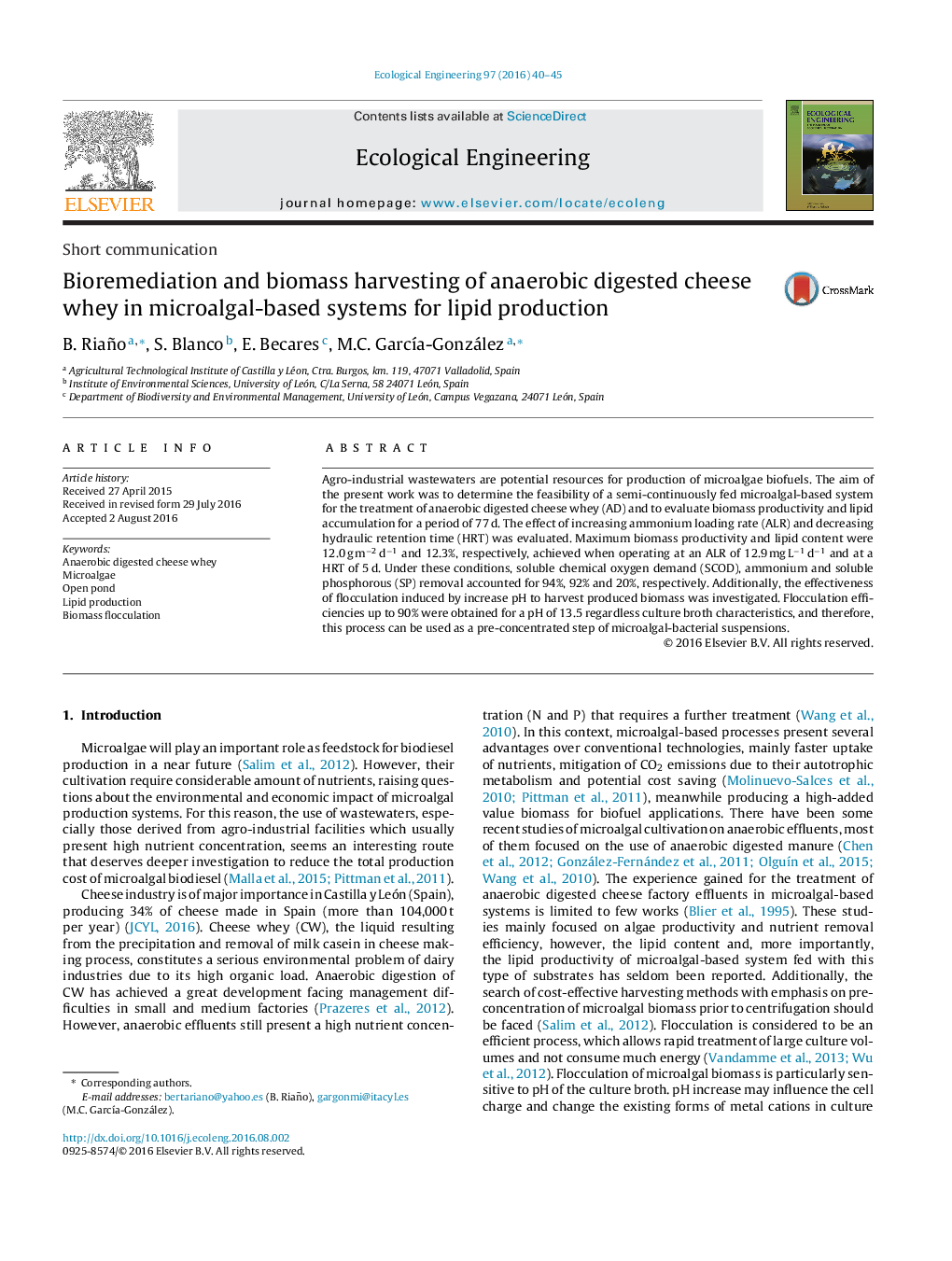| Article ID | Journal | Published Year | Pages | File Type |
|---|---|---|---|---|
| 4388363 | Ecological Engineering | 2016 | 6 Pages |
•Anaerobic digested cheese whey is used for microalgal growth.•Increasing organic and nutrient load and shorten HRT enhance lipid productivity.•Flocculation induced by high pH is effective as a pre-concentrated step.•Efficiencies at pH up to 13.0 are similar regardless microalgal population.•Organic content influences flocculation efficiency in microalgal-bacterial broths.
Agro-industrial wastewaters are potential resources for production of microalgae biofuels. The aim of the present work was to determine the feasibility of a semi-continuously fed microalgal-based system for the treatment of anaerobic digested cheese whey (AD) and to evaluate biomass productivity and lipid accumulation for a period of 77 d. The effect of increasing ammonium loading rate (ALR) and decreasing hydraulic retention time (HRT) was evaluated. Maximum biomass productivity and lipid content were 12.0 g m−2 d−1 and 12.3%, respectively, achieved when operating at an ALR of 12.9 mg L−1 d−1 and at a HRT of 5 d. Under these conditions, soluble chemical oxygen demand (SCOD), ammonium and soluble phosphorous (SP) removal accounted for 94%, 92% and 20%, respectively. Additionally, the effectiveness of flocculation induced by increase pH to harvest produced biomass was investigated. Flocculation efficiencies up to 90% were obtained for a pH of 13.5 regardless culture broth characteristics, and therefore, this process can be used as a pre-concentrated step of microalgal-bacterial suspensions.
